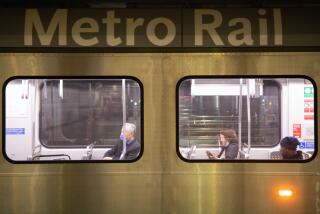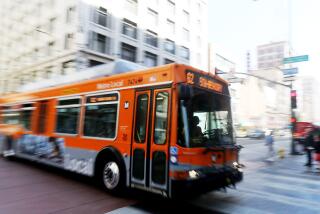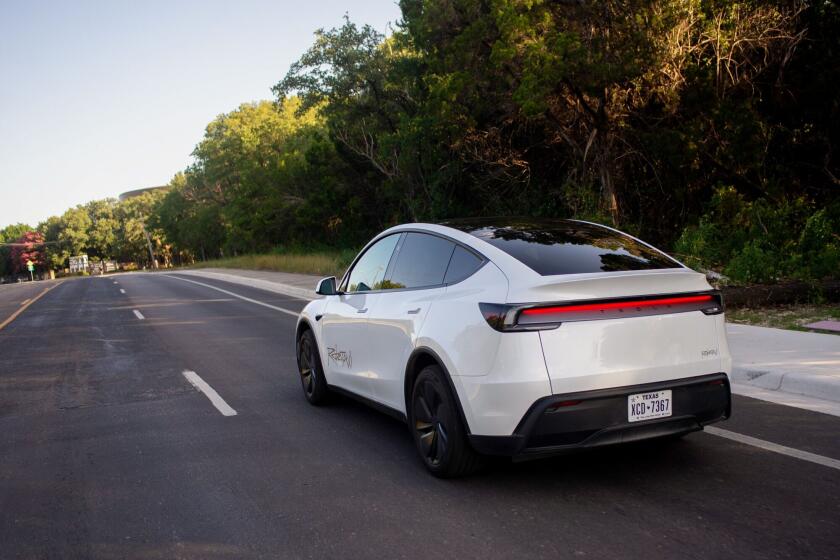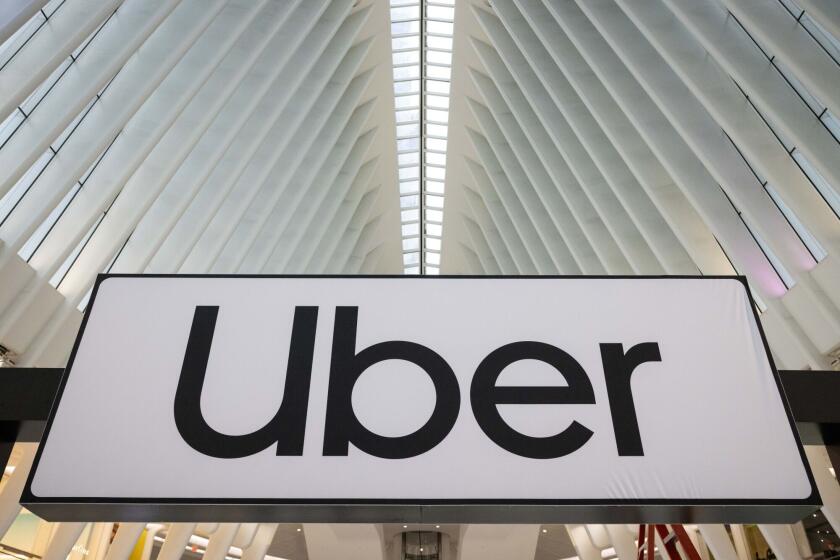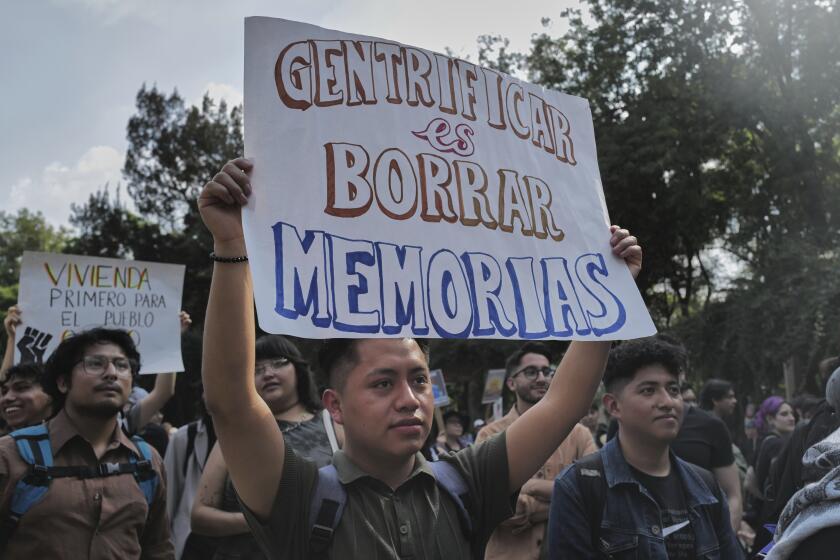Metrolink locomotive cameras lead to probes of 2 engineers
- Share via
One Metrolink locomotive engineer has been barred from the regional commuter rail system and another is under investigation for allegedly trying to block views of new video surveillance cameras placed in control cabs with the intention of improving safety.
Agency officials say they are taking the incidents seriously and want to send a message that tampering with the system will not be tolerated. The cameras were designed to monitor train operators after federal investigators found that an engineer’s actions contributed to the deadly 2008 Chatsworth disaster.
However, attorneys for the engineers’ union allege that the video cameras are creating a safety hazard of their own.
Changes to sun visors made to accommodate cameras have exacerbated glare and made it more difficult to see locomotive speed indicators, according to statements prepared by the union in connection with a federal lawsuit challenging use of the cameras. The case is being watched as a test of a key safety reform being sought nationwide.
The Brotherhood of Locomotive Engineers and Trainmen alleges that at times engineers face a dilemma, choosing between operating trains without being able to see clearly or trying to block the sun’s glare with newspapers and paper towels.
Sun visors were moved when the cameras were installed, Metrolink spokeswoman Angela Starr acknowledged. But the agency does not believe the change created a problem, she said. Sunglasses are issued to drivers and the visors are still available, she added.
The investigation of the engineer banned from the railroad concluded that he was trying to block the camera’s view, she said, first by turning the device and later by putting a visor in front of the lens. The actions were not “to block the glare,” Starr said. Union officials declined to comment on the recent cases.
A spokesman for the Federal Railroad Administration, which investigates safety issues, said the agency is aware of the disciplinary cases but had received no complaint about possible sun glare hazards related to the video equipment.
The dispute over the cameras, the first of their kind in the nation, is one of a series of challenges confronting Southern California’s five-county rail service as it tries to recast itself as an industry leader on safety. Among other things, the agency is testing the country’s first crash-resistant commuter rail cars, with crushable impact zones, while trying to deliver a highly complex, satellite-assisted collision avoidance system ahead of the rest of the nation.
The agency is working to create a fresh start after several high-profile crashes in recent years, most notably the Chatsworth collision with a freight train that left 25 dead and dozens hospitalized. The National Transportation Safety Board blamed the crash on a distracted Metrolink engineer who sent and received text messages just before running a red light. The video cameras, installed last year, are part of an effort to increase oversight of train crews, officials say.
The alleged interference with the cameras has not been widespread, officials stressed. “It’s unacceptable, intolerable,” said Metrolink Chief Executive John E. Fenton. “Our locomotive engineers want to provide safe service. It is very isolated what has happened.”
Three alleged attempts to thwart the cameras involved one engineer, officials said. That engineer was barred last week from operating any train on Metrolink-controlled tracks, Starr said. Still under investigation is a fourth incident in March, involving a second engineer who allegedly clipped paper to a visor to block the camera.
Ironically, the actions were captured by the in-cab cameras — one focused toward the engineer’s face and another directed toward the front windshield from behind the engineer.
“I think the vast majority of our engineers are among the best in the business,” said Metrolink board member Richard Katz. But “if you’re concerned enough about something you’re doing” to tamper with the cameras, he said, “that’s a pretty good indicator to us you’re someone we need to watch very carefully.”
After Metrolink installed its cameras, the National Transportation Safety Board called for all of the nation’s passenger trains to carry similar equipment. The Federal Railroad Administration, which implements safety requirements, is reviewing the recommendation. But at this point cameras are not considered a safety appliance subject to either federal regulation or federal enforcement actions involving tampering, said FRA spokesman Warren Flatau.
For now, Metrolink engineers, who work for an operating contractor, Connex Railroad, face disciplinary action under a contract prohibition on “conduct unbecoming” an employee, according to Starr.
The union wants an alternative to cameras, such as jamming non-emergency cellphone calls from control cabs, to be explored, saying that would be more effective in preventing accidents. Video surveillance has increased job strain and chances of error by operators, the union claims. Members are reluctant to vent frustrations, use fatigue-reducing exercises or display bladder discomfort for fear their actions could be misconstrued, the union says in lawsuit documents. Some engineers have been kidded, confronted and harassed about conduct caught by the cameras, the union contends. It further alleges that the devices infringe on worker rights and were installed without proper FRA approval.
Stress- and fatigue-reducing exercises are strongly encouraged, and planning bathroom breaks is part of many safety-critical jobs, Starr said. Federal approval of the cameras was not needed, she added. The agency closely controls information captured by the cameras, she said, and does not have evidence that employees have been harassed because of behavior captured by them.
The cameras have already proved valuable and are needed because of lessons drawn from the investigation of the Chatsworth disaster, Metrolink officials say.
“It about enhancing safety,” Starr said. “There’s no expectation of privacy in a locomotive cab.”
More to Read
Sign up for Essential California
The most important California stories and recommendations in your inbox every morning.
You may occasionally receive promotional content from the Los Angeles Times.
